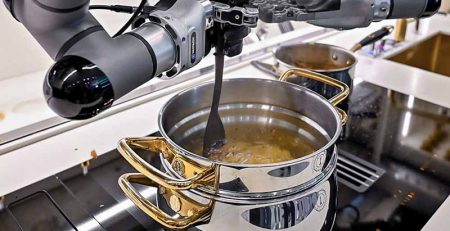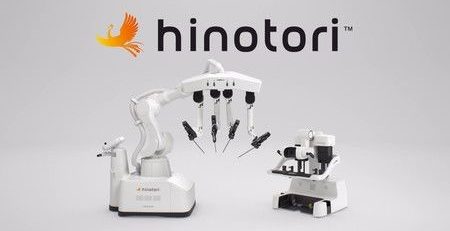Automation and Robotics in Agriculture
Automation and Robotics in Agriculture
Never before, have the automation and robotics become the popular as at the moment, the reason for this can be attributed to the facts that : people need more products from farm than ever, in addition, The world population is growing steadily, and now it has reached 7.7 billion people. One question that comes to mind is, what are all these people going to eat? First and foremost, this question is addressed to the agriculture industry.

The growing population is hardly the only challenge facing modern farmers. What about labor shortages and consumers asking for eco-friendly sustenance? The answer to all these questions is smart farming.
Automated agriculture is a diverse sphere as of now, so we are going to cover the latest innovations and the derived benefits.
One solution to many challenges: What is farm automation?
Why would hundreds of business owners invest in automated farming? The current challenges that face the agriculture sector need to be immediately addressed. If you work in this sphere, these problems are nothing new for you:
Consumer preferences. The overload of fast food and other unhealthy meals on the market has led to a demand for healthier food products. The impact that unhealthy food has had on our bodies has led to a “back to basics” approach: consumers all over the world are craving for plant-based wholesome food. Farmers should provide it in large amounts to meet the new consumer demand.
Labor shortage. You will hardly find a teenager nowadays who dreams of being a farmer. The truth is, the world population is seeking to live a more urban lifestyle, so the farming business has to deal with the labor shortage. Furthermore, modern agricultural practices have changed over the last decade, which makes it harder to train new workers.
Ecological responsibility. The general public and local authorities expect agricultural companies to be eco-friendly and demonstrate a responsible approach to their work. Farmers should opt for a reduced usage of chemical components, in particular, pesticides. Business owners in the agricultural sector are looking for a solution in response to this social and ecological demand, and they can find it in farm automation.
Farm automation (or smart farming) is a variety of tech innovations in traditional farming to optimize the food production process and improve quality. As of now, advanced farming technology can be an essential part of the farmer’s daily work.
Robots and drones: Ways to use automation in agriculture
Smart farming is a very broad sphere, so its usage heavily depends on the company’s individual needs. Will drones or robots suit your business better? Let’s see what works best in different cases.

Robots and autonomous machines
Agriculture is a perfect niche for innovations in the sphere of robotics: farmers usually have to deal with repetitive tasks in the field, and this work is primarily labor-intensive. Now agricultural robots (or “agrobots”) cope with a wide range of tasks: harvesting, watering, seeding, etc. Let’s take a closer look at their work.
 Automated tractors
Automated tractors
These types of tractors can be controlled remotely. It is only necessary to help during the initial set-up and maintaining machines regularly. With time, smart tractors will become more and more independent with such technologies as vision systems, tools for light detection, GPS, etc.

autonomous-tractors-in-agriculture
Bear Flag Robotics specializes in building driverless tractors and aims to make the labor cheaper for farmers. They can control several tractors remotely, plan the machine’s route, get real-time reports and alerts – the work can be done without direct human intervention in the field.
Seeding and weeding robotics
Robots for planting are focused on the field’s specific area, and they work with great precision. This type of farming robot uses artificial intelligence and computer vision, which allows for a reduction of pesticides in the field and, subsequently, the production of high-quality food.

Eco Robotics produces completely autonomous robots that use solar power for their work. This is the greenest approach: a small four-wheel machine is moving across the field and spraying herbicides with minimum damage to the crops and environment.
Automatic irrigation
Robot-assisted irrigation systems roughly contain two big parts: a Subsurface Drip Irrigation (SDI) system plus special sensors.
SDI is well-known in the agriculture industry – it provides an accurate means of controlling the amount of water that is used, and at what time the plants receive it. Even though these systems are obviously more advanced than manual plant-by-plant watering, they are still not perfect as they require some human assistance.
 More sophisticated IoT sensors can monitor the moisture levels by themselves and send real-time analytics to a smart device. The combination of SDI and such sensors creates automated farming equipment that facilitates the work and saves water resources.
More sophisticated IoT sensors can monitor the moisture levels by themselves and send real-time analytics to a smart device. The combination of SDI and such sensors creates automated farming equipment that facilitates the work and saves water resources.
The RAPID (Robot-Assisted Precision Irrigation Delivery) project offers farmers a cost-conscious solution based on the work of adjustable irrigation emitters across the field.
Harvest automation
Harvesting is not easy work for machines – they should be gentle enough not to damage fruits and vegetables. Nevertheless, harvest robots already exist and they cope with their tasks successfully.
 For example, Abundant is the first commercial company specializing in apple harvesting. The trick is to use a vacuum instead of graspers or similar devices. Agrobot, in its turn, is closer to the ground – the company builds robots to harvest strawberries. This innovation determines the fruit’s ripeness via AI technology.
For example, Abundant is the first commercial company specializing in apple harvesting. The trick is to use a vacuum instead of graspers or similar devices. Agrobot, in its turn, is closer to the ground – the company builds robots to harvest strawberries. This innovation determines the fruit’s ripeness via AI technology.
Drones
Drones have an important role in agriculture’s innovative changes. Earlier, having a glance at a field was possible only with helicopters or even satellites – things have changed now. Using a drone is cheaper and does not require any special human skills like flying a helicopter.
 Drones can take aerial photos and videos, and the files’ quality is getting better with time. But this is far from the only way to use drones in agriculture.
Drones can take aerial photos and videos, and the files’ quality is getting better with time. But this is far from the only way to use drones in agriculture.
Monitoring and analytics
The average field size makes it almost impossible to properly monitor the state of a harvest. Previously, the most reliable solution was satellite imagery, but still, it did not give enough guarantees to farmers: such images were inaccurate and did not provide real-time information.
If several farming automation solutions work in conjunction, the watering drones can get signals from other agrobots about the plants that need the help more than others. In other words, agrobots communicate with each other and solve problems on the go.
Benefits of agriculture automation
One Agrobot can change the future. Smart farm automation technology has great potential to be tremendously impactful. The solution to numerous global problems and the creation of eco-friendly approaches lies in this field of technology.
Labor in some farming branches can take up to 50% of the overall cost. The labor shortage makes this situation even more dramatic. Using robots for seeding, harvesting, watering, and monitoring decreases the need to hire employees for numerous monotonous tasks.
Agriculture is becoming more eco-friendly.
The usage of pesticides frightens lots of people, that is why agriculture is gaining a infamous reputation. Robots are shifting the rules of the game towards an environmentally-friendly approach: they can add pesticides with great precision, which is almost impossible when done by an actual human.
Conclusion: this is the inevitable trend and will never stop, this will help people increase the farm productivity and people have more time to enjoy the life instead of working hard.
Sounce:
https://easternpeak.com.
https://www.machinedesign.com.
https://internetofbusiness.com.
https://www.machinedesign.com.
















